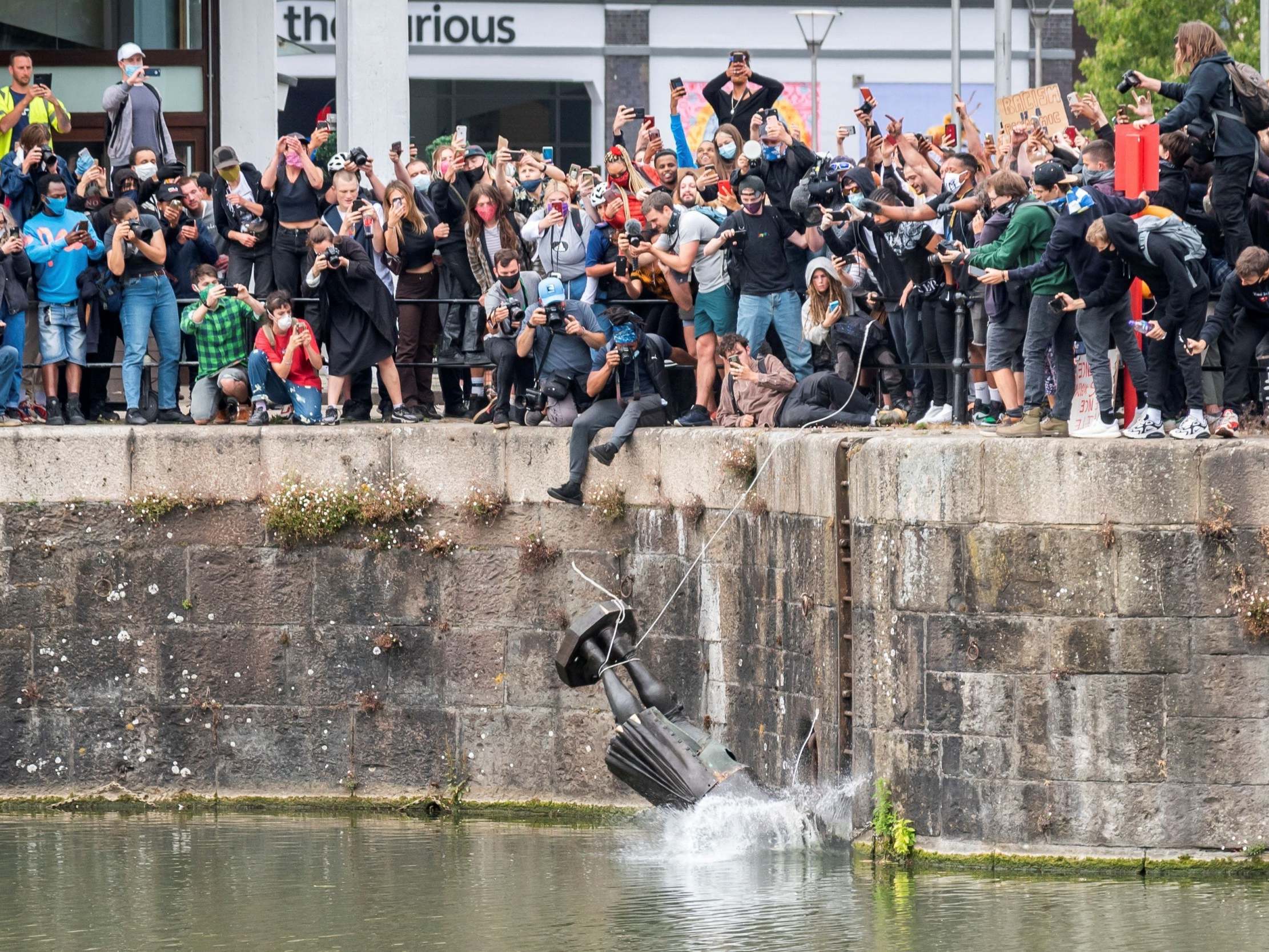Bristol says it will retrieve slave trader statue from river and put it in a museum
‘The events over the last few days have really highlighted that as a city we all have very different understandings of our past’, mayor says

Your support helps us to tell the story
From reproductive rights to climate change to Big Tech, The Independent is on the ground when the story is developing. Whether it's investigating the financials of Elon Musk's pro-Trump PAC or producing our latest documentary, 'The A Word', which shines a light on the American women fighting for reproductive rights, we know how important it is to parse out the facts from the messaging.
At such a critical moment in US history, we need reporters on the ground. Your donation allows us to keep sending journalists to speak to both sides of the story.
The Independent is trusted by Americans across the entire political spectrum. And unlike many other quality news outlets, we choose not to lock Americans out of our reporting and analysis with paywalls. We believe quality journalism should be available to everyone, paid for by those who can afford it.
Your support makes all the difference.The city of Bristol has said it will retrieve the statue of Edward Colston and place it in a museum after protesters hurled the monument into the harbour as part of anti-racism protests on Sunday.
The bronze of Colston, a 17th-century slave trader, was dragged through the streets of the city, triggering a national conversation on the legacy of Britain’s colonial past and the need for statues that venerate the darker parts of the nation’s history.
Now the city’s council has said the statue will be pulled retrieved from the harbour and placed in one of its museums alongside the placards held aloft by those at the protest that removed it from its plinth.
The move is one of a number aimed at assessing the city’s role in Britain’s imperial history – with city mayor Marvin Rees announcing that a new research commission would provide “more accuracy” to the city’s history, including the impact of “wars, protests, slavery and freedom”.
Mr Rees said: “The events over the last few days have really highlighted that as a city we all have very different understandings of our past.
“The only way we can work together on our future is by learning the truth of our beginnings, embracing the facts, and sharing those stories with others. This is why this commission is so important.”
It comes as communities across the UK and the world consider the legacy of racism left by their forbears.
The vice chancellor of London Metropolitan University said it would drop the name of 17th-century merchant Sir John Cass from its Art, Architecture and Design School in recognition of “the enormous pain he caused as a major figure in the early development of the slave trade”, while in the east of the capital a statue commemorating slaver Robert Milligan was taken down on the order of the mayor Sadiq Khan.
However, while some, including business minister Nadhim Zahawi, have called for a “warts and all” understanding of history, others have said the stories of the past are better told in museums than by solitary statues.
Dr Jessica Moody, lecturer in public history at the University of Bristol, said there is an option for some statues to be placed in museums where the context of their controversy can be set out.
“Some of the statues currently under debate could certainly go into a museum where this history and context, the use and abuse of the past, can be more fully explored, so long as this was done in an appropriate manner with consultation – and which records the nature of their removal as an important part of the history of the communities around them.”
She said this is not the “right option” for all statues, adding: “I don’t think we should expect museums to take responsibility for all the statues of dead white imperialists”.
However Dr Moody added: “Once we understand statues and memorials as products of their time, about a whole host of ulterior motivations, and having had histories of contest around them for many years; removing them is much less about ‘forgetting’ histories of slavery and empire than it is rethinking the ways these difficult pasts are represented”
Additional reporting by Press Association
Join our commenting forum
Join thought-provoking conversations, follow other Independent readers and see their replies
Comments